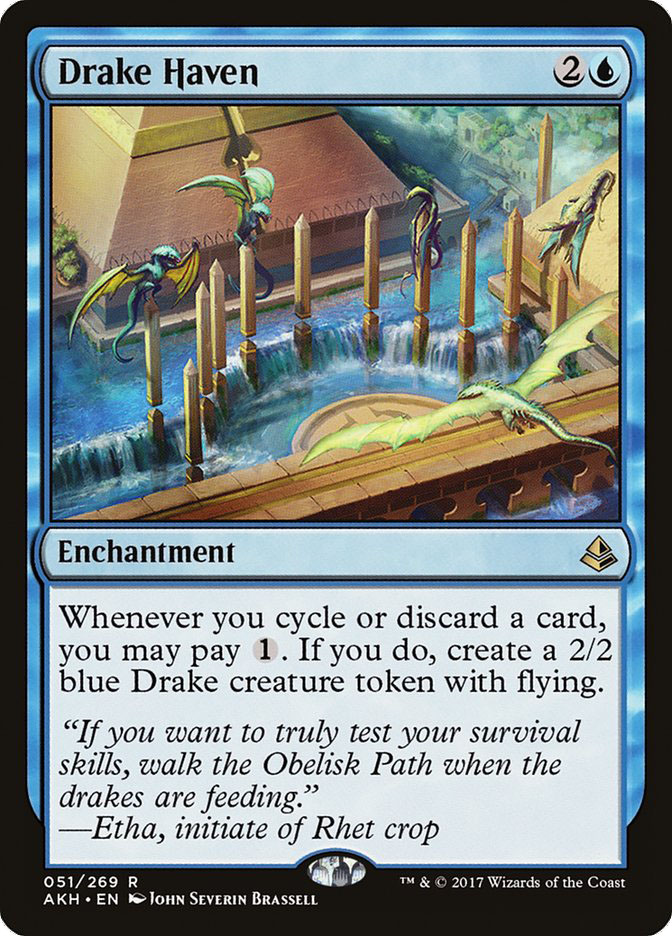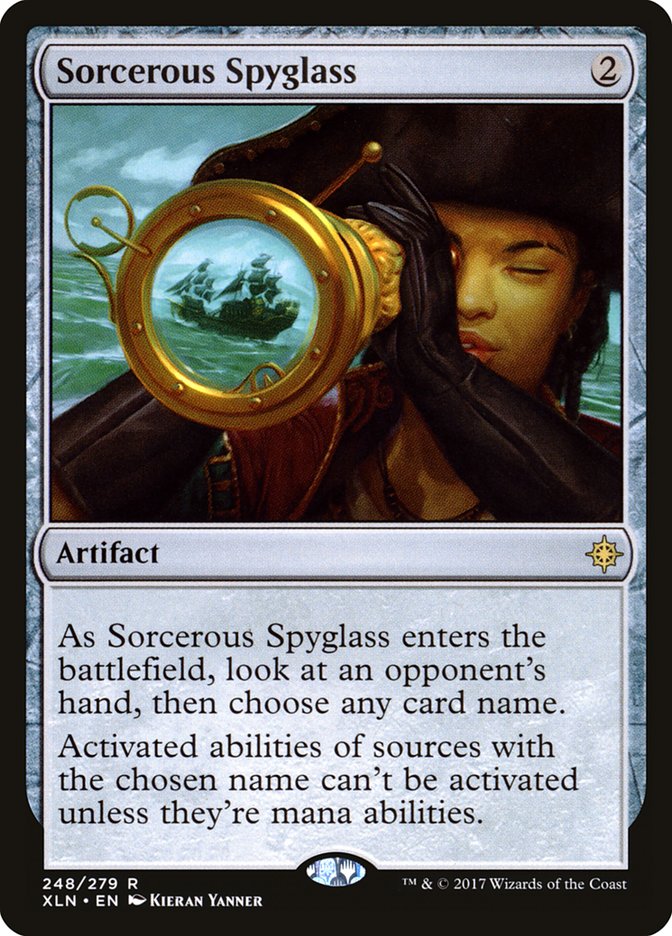Failure is a huge portion of every competitive Magic player’s experiential
base. Thousands of people walked into GP Los Angeles, GP Providence, and
the StarCityGames.com Dallas Open, and only five individuals were able to
walk out without experiencing failure. I was not among these five
individuals. In fact, my failure was particularly pronounced, as my GP Los
Angeles experience ended with a paltry 3-3 record.
On my new podcast,
Head GAMs
, we spent this week’s episode discussing failure at length. A central
thread of this discussion revolved around finding ways to make failures
into net positives. In any competition where failure makes up a significant
portion of outcomes, the player who can take the most away from their
failures has the capacity to progress most quickly. In that vein, I want to
speak about exactly what caused my failures in LA.
First, my list:
Planeswalkers (5)
Lands (26)
Spells (29)

If you listened to this week’s GAM Podcast, you already know why I was
excited about this version of Bant Nexus. The addition of Censor and
Hieroglyphic Illumination added mana efficiency and velocity to an
archetype primed to capitalize on both. Furthermore, the inclusion of these
two cards allowed me to turn up a prime piece of sideboard tech.
In my testing, Drake Haven took what was previously an atrocious matchup in
Esper Control and completely turned it on its head. Boarding in all
non-Lyra Dawnbringer sideboard cards and eliminating Nexus of Fate,
removal, and fogs allowed Bant Nexus to play a bizarre fish-like game that
Esper Control opponents were simply not prepared for. So, what went wrong?
I answered the wrong problem.
After Esper Control’s breakout performance in GP Brussels, I was confident
people would pick up the deck en masse this weekend. This proved to be
false. Across the two Grand Prix, there was not a single copy of Esper
Control present in elimination rounds. Instead, U/W Control proved to be
the better Teferi, Hero of Dominaria deck for this weekend, making it all
the way to the finals of GP Providence in the hands of Oliver Tiu.
Creatures (2)
Planeswalkers (4)
Lands (26)
Spells (28)

I was so excited about a solution to the Esper Control problem, that I was
willing to buy into the fallacy of a static metagame. Last week’s data had
suggested that red-based aggressive decks were likely to remain a huge
portion of the metagame. Furthermore, these red decks were apt to shift to
a lower to the ground, go-wide strategy to avoid Esper Control’s copious
spot removal. Given this shift, a counter-move to U/W Control and its
Settle the Wreckages makes a lot of sense.
Obviously, Drake Haven looks much worse against a U/W Control deck with
access to ample countermagic, Cast Out, and Forsake the Worldly. I had
given up a significant portion of my sideboard to combat last week’s
predator, all while leaving myself soft against the new king of the jungle.
This led directly to my next mistake.
I did not play enough answers to Sorcerous Spyglass.
After Bant Nexus appeared at Pro Tour 25th Anniversary, people quickly
dredged up counter-measures. Insult, Lost Legacy, and a few other oddballs
have all stepped up to keep opponents from taking all the turns. In turn,
Bant Nexus adapted right back, picking up Settle the Wreckage
to deploy on
Insult turns, and diversifying win conditions. But these adaptations all
took up valuable sideboard real estate, and slowly four Manglehorns became
three, three became two, and two became the single Forsake the Worldly that
I played at GP Los Angeles.
All day (as brief as my day was), I found myself faced with a Sorcerous
Spyglass naming Teferi, Hero of Dominaria and praying that I would find my
solitary Forsake the Worldly. In the absence of the appropriate
countermeasures, Sorcerous Spyglass is the best possible hate card against
Bant Nexus. Historically, the correct way to attack Fog-based strategies is
to inhibit their ability to reliably draw multiple cards in a turn.
In my version of Bant Nexus, Teferi, Hero of Dominaria; Karn, Scion of
Urza; and Azcanta, the Sunken Ruin are the cards which allow my deck to
draw multiple cards per turn. All these cards can be rendered ineffective
by Sorcerous Spyglass. In fact, in my final match of the day, I faced down
three Sorcerous Spyglass naming those three cards.
Sorcerous Spyglass is incredibly underplayed in Standard, given just how
important activated abilities are right now. Think back to previous eras of
Magic when Pithing Needle was played in large numbers. It was rare that
Pithing Needle was ever shutting down a card as powerful and ubiquitous as
Teferi, Hero of Dominaria. Several players who found success this weekend
recognized this fact and upped their Sorcerous Spyglass count.
Creatures (21)
- 2 Pia Nalaar
- 4 Bomat Courier
- 4 Scrapheap Scrounger
- 2 Kari Zev, Skyship Raider
- 1 Glorybringer
- 2 Hazoret the Fervent
- 1 Soul-Scar Mage
- 1 Rekindling Phoenix
- 4 Goblin Chainwhirler
Planeswalkers (2)
Lands (25)
Spells (18)

I want to throw some praise Cain’s way not only because he is a Patron and
frequent contributor to the GAM Podcast Discord but also because his
inclusion of Sorcerous Spyglass over something far narrower like Insult is
exactly what I’d like to see from any deck that isn’t relying on Teferi,
Hero of Dominaria itself.
My final, and perhaps most damning, mistake at the GP was one I am all too
familiar with.
I did not play enough games with my deck prior to the GP.
I found the Drake Haven plan very late in the week, and while I was
confident that it was a nice addition to Bant Nexus’s arsenal, I did not
play enough games to identify other weaknesses that I had introduced to the
build. The vulnerability to artifacts is something that would have been
immediately apparent, but my attention was focused on accomplishing a
separate, far too narrow goal. Had I simply made time to hop back on Magic
Online after arriving in Los Angeles, I am sure I would have added a copy
of Forsake the Worldly to my maindeck and an additional copy to my
sideboard.
Relying on discussion, theory-crafting, and instinct was something I
considered a hallmark of my approach to Magic at a time when I was
attempting to balance quasi-competitiveness with a demanding career in law.
It’s all too easy to recall my successes under impossible time constraints
achieved with very little or no actual playtesting. But so much of this
narrative that I routinely tell myself is smoke and mirrors. If I am being
honest, there have been far more failures than successes borne of my
under-preparedness.
Poor performances under time constraints always came with a built-in excuse
though, and I was able to easily free myself of any liability for bad
results. I would tell myself that no one could succeed under my
circumstances, and I shouldn’t feel bad. But when success did come, I was
all too willing to use it as a feather in my cap and proof that I didn’t
need to spend time playing actual games of Magic. This has been a form of
both self-delusion and self-sabotage for me over my Magic career, and I
know many of you reading this right now are doing the same to your Magic
career.
To make the most of my failures, I’m taking this opportunity to let this
narrative die. I have no special ability to succeed without playtesting. In
the past, I may have gotten lucky a few times. I won’t be relying on luck
in the future.



